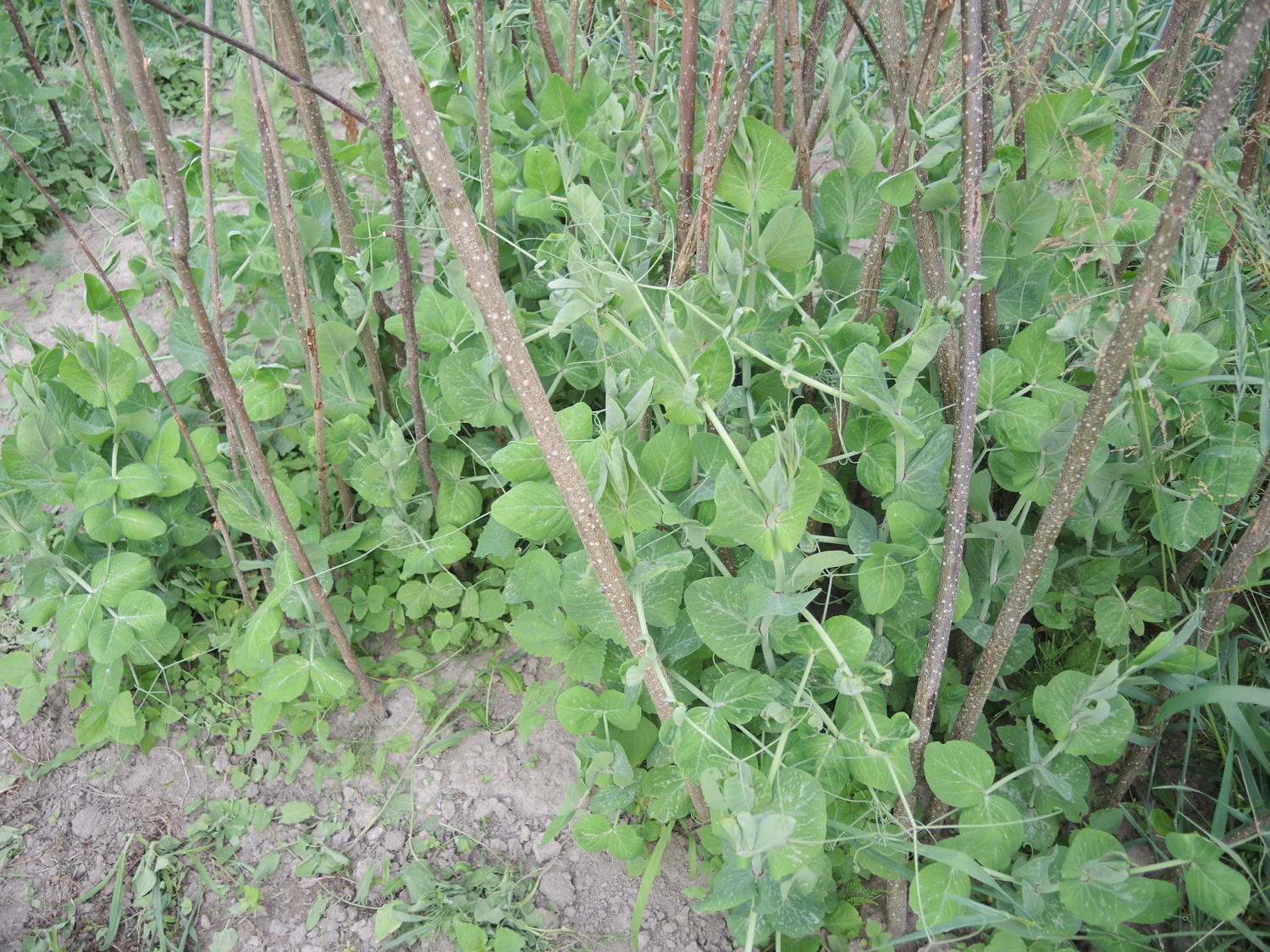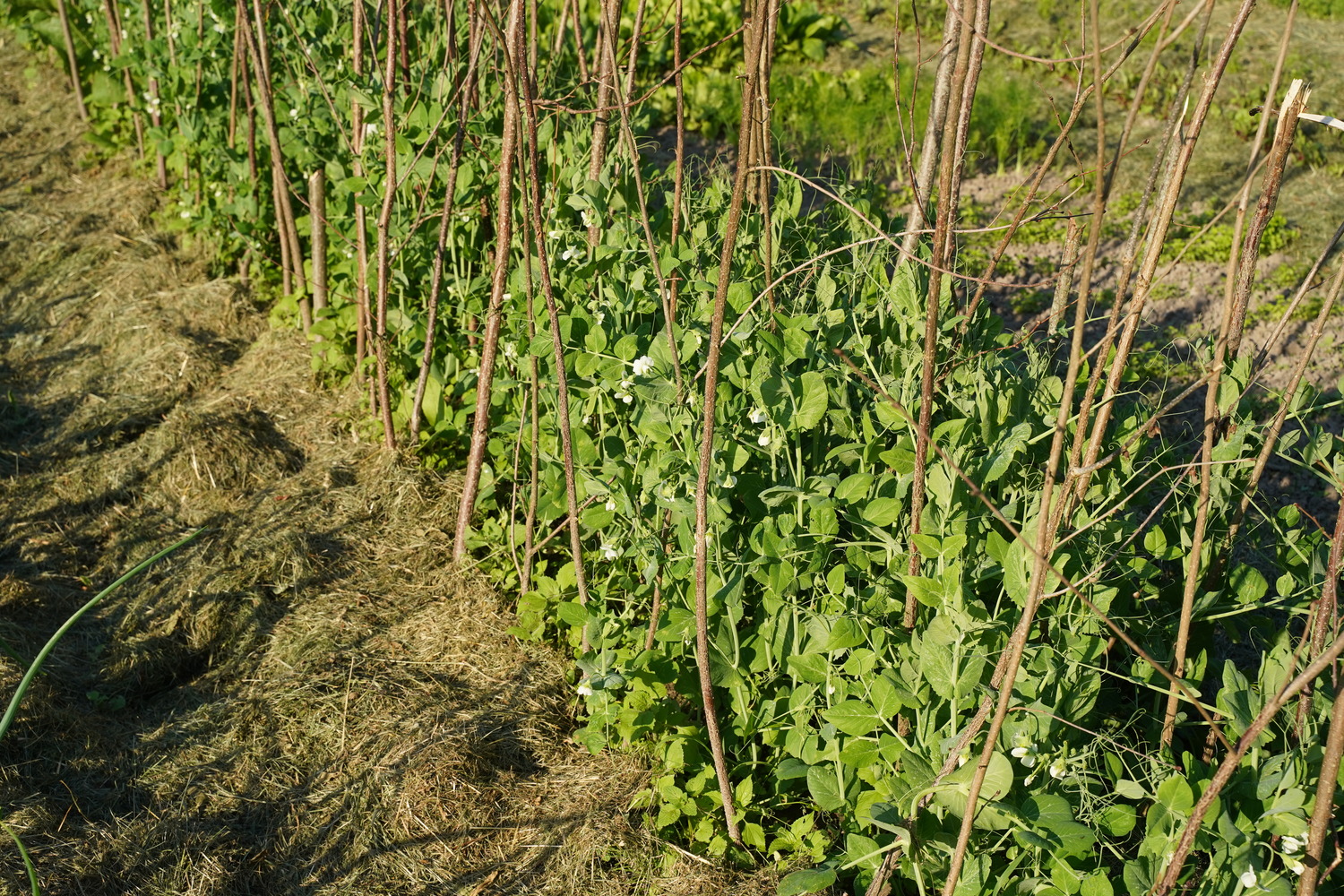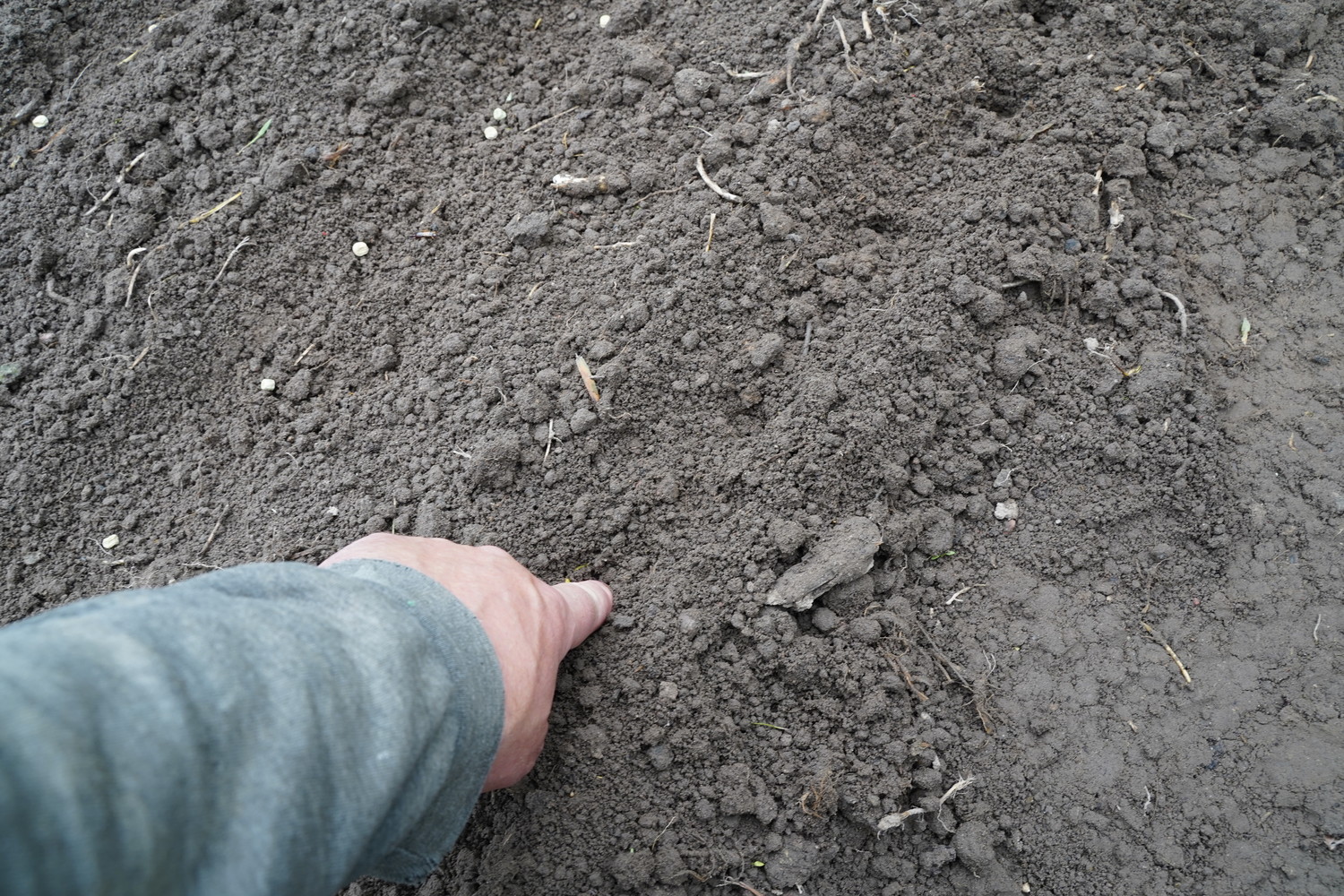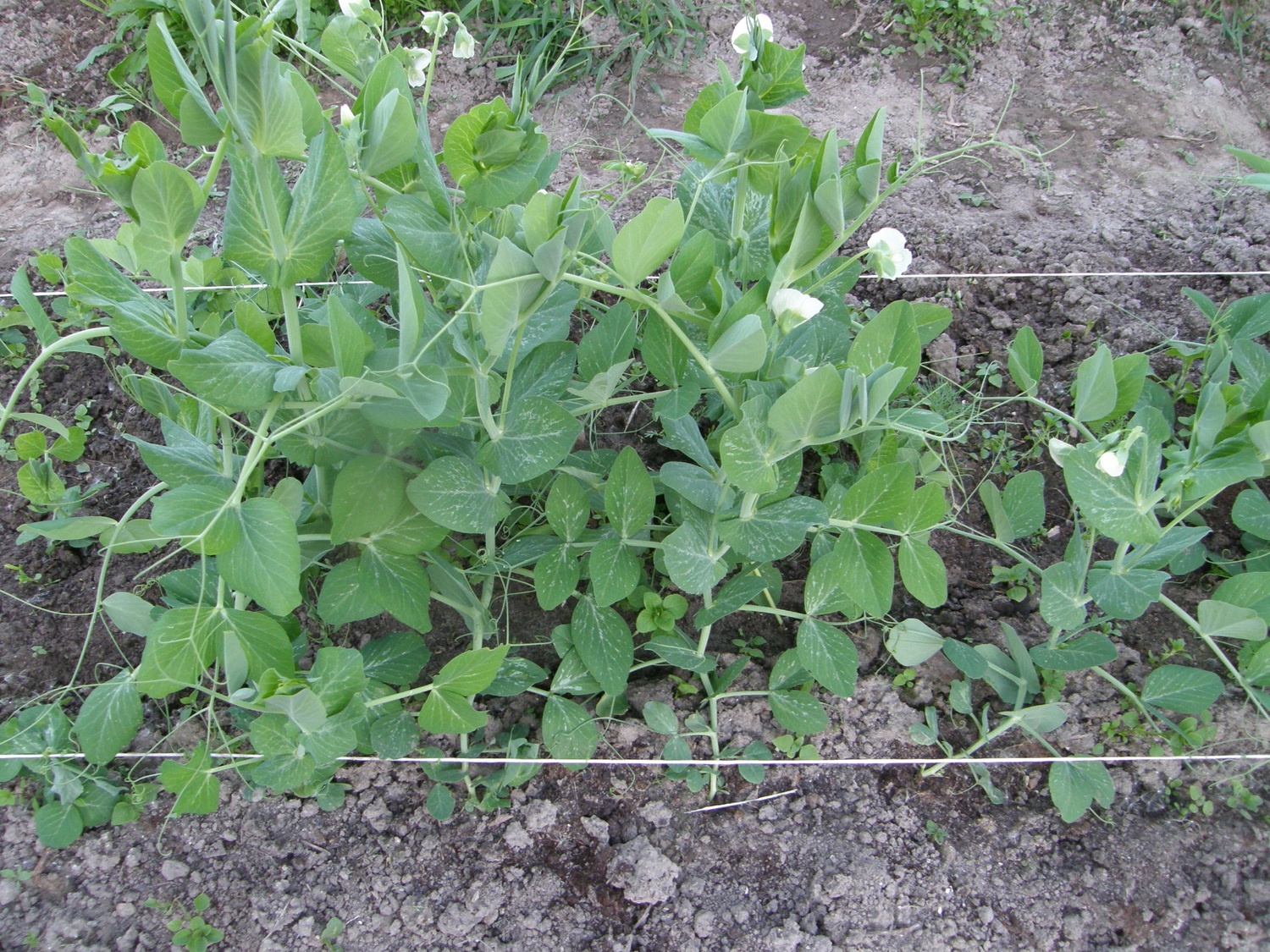One of the oldest cultivated vegetables in the world is the pea – it is not only a protein-rich food product but also an excellent preceding crop for other field plants. For this reason, there is a growing aim to make pea cultivation a profitable branch of crop production. Peas are rich in health-beneficial substances, containing a high amount of carbohydrates and proteins, making them almost comparable to meat. Additionally, peas are rich in sugar, vitamins, and mineral salts – especially phosphorus, calcium, and iron.

Pea cultivation is best suited to cohesive, moisture-retaining loam and clay soils. The soil should not be compacted. Peas grow well and yield successfully in loose, well-fertilised soil. A good pea harvest can also be achieved when fertile sandy loam soils lie over a clay subsoil and there is no moisture shortage during summer. Acidic and hilly soils are unsuitable for pea cultivation. In acidic soils, nodule bacteria develop poorly, leading to fewer pods and a low grain yield. The most suitable soils for peas are those with low acidity or neutral pH (6.5 – 7.0). Acidic soils should be limed and properly fertilised if better soils are unavailable.
In hilly areas, pea crops tend to thin out. On hilltops, where moisture is scarce, germination is significantly reduced, and the plants grow poorly compared to those on slopes or at the base. They also mature unevenly: while the pods on hilltops may already be shattering, those at the bottom may still be green. Peas are also unsuited to springy or waterlogged soils. Furthermore, they are hypesensitive to uneven terrain. Even in flat fields, if fertilisation is uneven or there are dips in the land, the peas will mature at different rates. Newly drained soils and areas with shallow groundwater are also unsuitable for peas.
Pea Varieties
Peas are classified into two main types: sugar peas (also known as snap or mangetout peas) and shelling peas (also known as garden or wrinkled peas). With sugar peas, the entire pod, including the seeds, is edible, while shelling peas develop a tough inner membrane, making only the seeds suitable for consumption.
According to their maturity period, peas are classified into:
- Early varieties, which produce their first harvest 45–60 days after germination;
- Mid-season varieties, maturing in 60–70 days;
- Late varieties take 80–90 days to mature.
Peas are classified by height as follows:
- Short varieties – up to 60 cm;
- Medium-height varieties – 60–80 cm;
- Tall varieties – 0.8–2.5 meters.
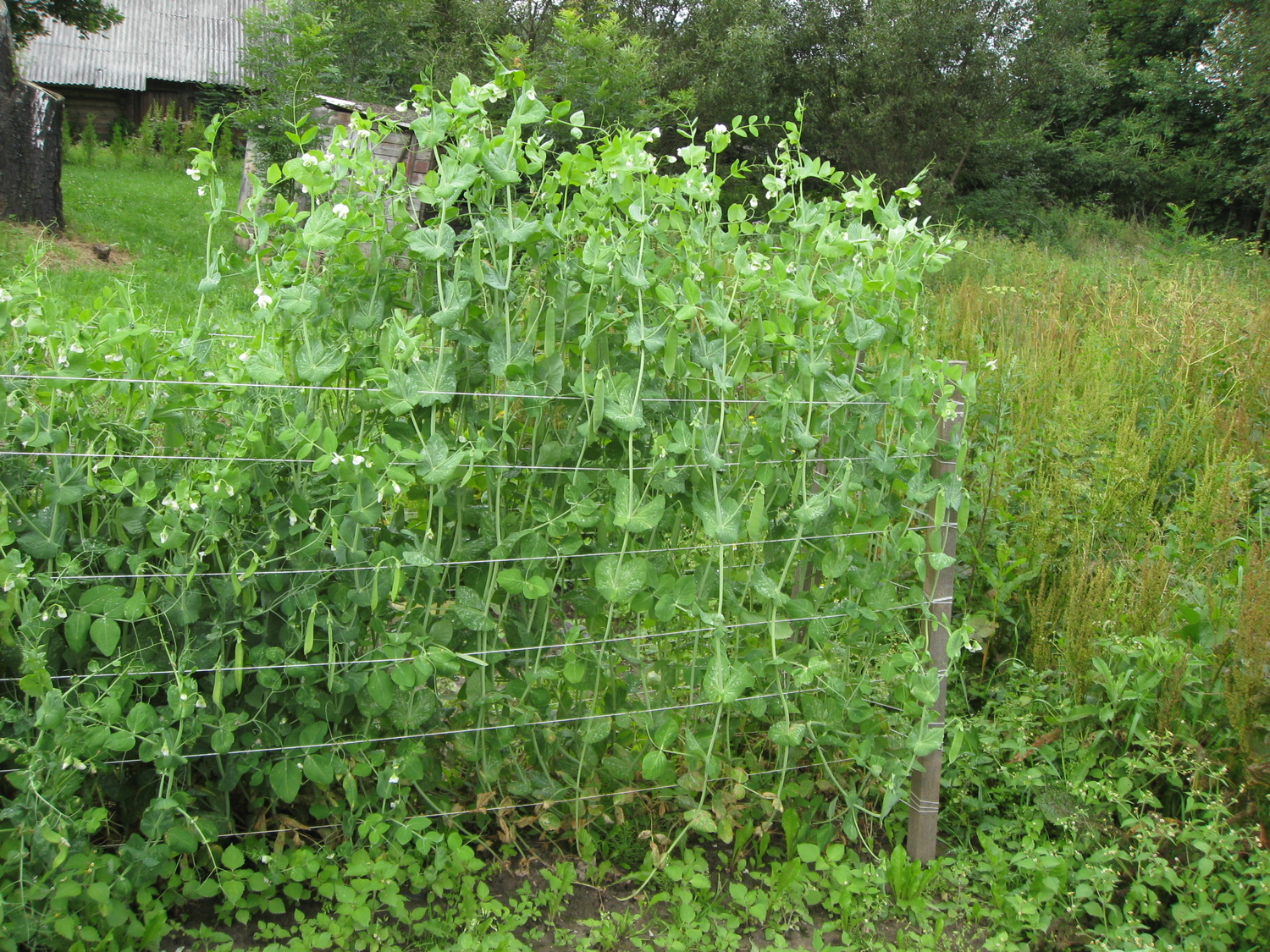
Pea seeds are either round or wrinkled. Round peas quickly lose their sugar content as they mature, which increases their starchiness. Wrinkled peas are used for canning.
Suitable Preceding Crops for Peas. Pea Fertilisation
Peas thrive best when sown after crops that accumulate nutrients and winter cereals fertilised with manure. Unsuitable preceding crops include winter rye, oats, clover, and leguminous plants. Peas should not be sown in the same field more frequently than every 4-6 years.
To achieve a yield of 4-5 tons/ha of pea seeds, the crop must be fertilised with phosphorus, potassium, sulfur, and micronutrient fertilisers. Phosphorus fertilisers are particularly important as they support the peas and the nodule bacteria. Among the micronutrients, copper, boron, molybdenum, cobalt, zinc, and others have a significant impact on pea growth and nitrogen fixation. It is recommended to apply about 350-400 kg/ha of one of the following complex fertilisers: NPK 5-15-30+3S+1.2Mg, NPK 6-26-30, or NPK 7-20-28+3.2S.
Growing Peas
Peas should be sown early in the spring, as soon as the soil begins to dry. The seeding rate for peas is 130-190 kg/ha. In organic farms and weedy soils, wide-row planting and cultivation between the rows are recommended. To ensure high pea productivity and form a good crop, it is essential to follow the full range of agrotechnical measures, including both primary and spring soil preparation. One of the key aspects of soil preparation is effective weed control, as peas struggle to compete with weeds during their early growth stages.
In the fall, the field designated for peas should be plowed deeper than other crops, as their roots penetrate deeper into the soil. In the spring, it is crucial to control weeds, prepare seedbeds, and conserve soil moisture. The soil for peas should be loose enough to ensure proper aeration. Sowing typically begins at the end of April. At temperatures of 4-7°C, seeds will germinate in 10-14 days. Seedlings can tolerate frost down to -6°C, but it’s better to cover the rows with agrofilm. If sowing a single pea variety, it is recommended to plant every 10 days for a longer harvest period. The latest sowing date for peas is the end of May, as they require long days to flower and yield abundantly.
The spacing between pea rows should be 15-20 cm, and between peas in the rows should be 5-6 cm. Furrows are made into which the peas are sown. After leveling the soil, peas should be planted at a 3-6 cm depth. In heavier soils, they should be planted less deeply. The spacing also depends on the height of the pea variety – taller varieties should be planted further apart. Peas are often disturbed by birds, so it is a good idea to cover the crops.
Peas that are sown early and at an even depth usually mature uniformly. However, their ripening time largely depends on the weather. If July is dry and hot, the pea harvest can be successfully done with a grain combine as early as the beginning of August. On the other hand, a rainy and cold July can delay maturity until the end of August or even later. Rainy weather at the end of the ripening period is particularly undesirable—rain often causes the pea plants to lodge (fall over), leading to significant grain losses during combine harvesting. Once mature, the pods open quickly, and the peas begin to fall out, so it is crucial to harvest them on time. It is recommended to harvest mature peas within 5 days to minimise yield losses.
Pests and Diseases of Peas
Pea yield is heavily influenced by diseases and pests, so when selecting a pea variety, it's important to consider not only its productivity but also its disease resistance. The most dangerous pests for peas are pea moths and leaf rollers. The larvae of these pests overwinter in the soil, and in spring, the adult moths emerge from their cocoons just as the peas begin to flower. Each moth lays over 200 eggs on pea leaves, flowers, and stems. Depending on weather conditions, larvae hatch within 5–10 days and burrow into the pods, feeding on the developing seeds. These larvae can often destroy the entire pea crop.
After 15–20 days, the larvae descend to the ground on silk threads, leaving behind droppings, and burrow into the soil to a depth of 2–2.5 cm. It's worth noting that early pea varieties are less affected by pea moths and leaf rollers compared to late varieties. Likewise, peas sown earlier in the season tend to suffer less damage. Regular spraying with insecticides is essential, to combat pea moths and leaf rollers.
Pea growers face other pests, such as thrips and root weevils, which reduce plant productivity. However, pea aphids are among the most harmful pests, capable of causing the greatest yield losses by damaging the leaves. All of these pests are controlled through the use of systemic insecticides.
The most common diseases in pea crops include ascochyta blight, powdery mildew, downy mildew, and root rot. Ascochyta blight is the most harmful disease, affecting various parts of the plant, including the seeds, where it can also overwinter. On the leaves and pods, round or oval grayish-yellow, sometimes nearly white spots appear, usually surrounded by a dark brown border. Petioles and stems are marked with elongated lesions. The underground parts of the plant are also affected.
Peas unaffected by pests and diseases.

